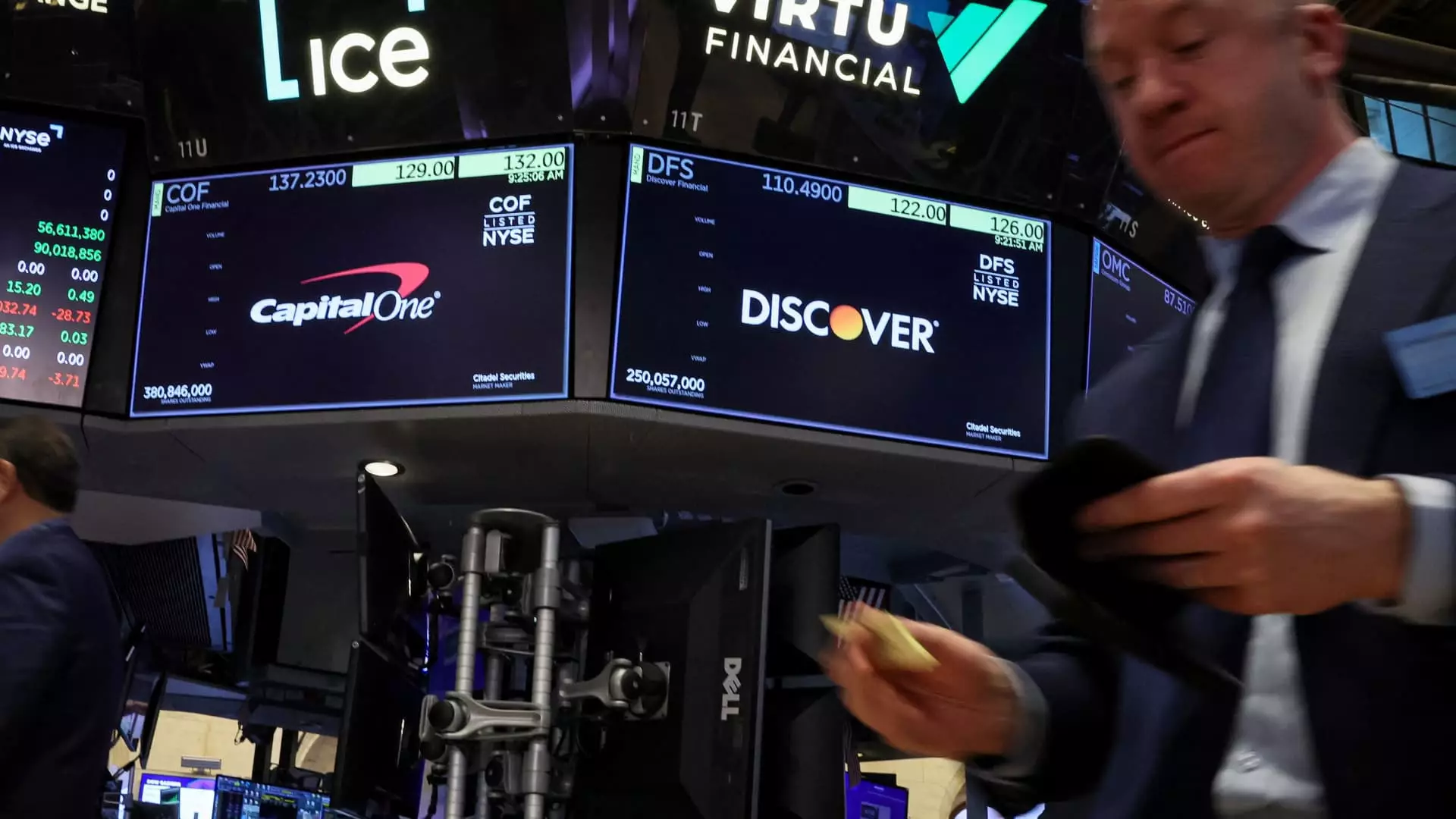The financial landscape is shifting, and Capital One is positioning itself for what could be a monumental transformation through its proposed merger with Discover Financial Services. If the deal materializes, analysts from BTIG project that Capital One’s stock could skyrocket to an incredible $427 per share—this represents a staggering increase of over 137% from its closing price last week. These assertions are more than mere hype; they indicate significant potential for Capital One to tap into Discover’s long-standing user base and enhance its footprint in the credit card marketplace. The projected growth is not just based on guesswork; it hinges on discernible synergies that could arise from the merger.
However, investors should be cautious. The twists and turns of regulatory approval could throw a wrench in what many perceive as a roaring success story. The anticipated benefits derived from capitalizing on Discover’s network emphasize the importance of innovation in the financial services sector. With Capital One ready to leverage its technological muscle, the horizon appears promising in the prime transactor credit card space. For many, this merger could breathe new life into a somewhat traditional banking sector; for critics, however, it raises concerns about market concentration and competition.
The Calculated Risks and Rewards
BTIG’s analysis is fundamentally optimistic, yet the risks are palpably real. The combination of Capital One and Discover could lead to increased scrutiny from regulators worried about monopolistic behavior in the subprime credit market. The current political climate tends to focus on equity and fairness, making it hard to overlook the possible repercussions of such market consolidation. While analysts project that the merger would elevate Capital One’s standing, there will undoubtedly be counterarguments highlighting the risks of a diverse marketplace shrinking into a few dominating players.
Beyond regulatory concerns, what is also striking is Capital One’s readiness to continue thriving even if the merger fails to materialize. With a standalone price target of $208 per share—offering a more modest yet still attractive 15% upside—the company has demonstrated fiscal resilience. BTIG noted a surplus of capital amounting to $25 billion, a financial cushion that allows for aggressive stock repurchases over the next few years. Though such tactics have been historically criticized for benefiting stockholders at the expense of long-term growth, the immediate returns could indeed appeal to investors keen on quick gains.
Antitrust Concerns Loom
The conversation around this merger isn’t without its drama. The Justice Department’s misgivings about antitrust issues have cast a shadow over Capital One’s optimism. An investigation can create uncertainty and hesitation in the financial markets, prompting investors to keep a close eye on capital movements. This tension allows for interesting exploration into the ethics of wealth accumulation in industries deemed “essential.” If the merger receives the green light, it will undoubtedly reshape the competitive dynamics between companies like Visa and Mastercard, forcing them to adapt or face obsolescence.
Critics of consolidation argue that it may undermine consumer rights by reducing choices and driving up prices in the long run. The possible litigation from President Trump’s family business further complicates the narrative, presenting a case against Capital One that questions its regulatory compliance. In a world where financial institutions must tread cautiously and navigate public relations minefields, how Capital One handles these antitrust discussions will significantly influence its public image and market performance.
What Lies Ahead?
Despite uncertainties, many industry analysts express a distinctly bullish attitude toward Capital One. The optimistic view rests considerably on the belief that Capital One CEO Richard Fairbank will navigate the regulatory labyrinth adeptly. Transactions are not just numbers; they are also narratives woven into the public consciousness of capitalism. Fairbank’s commitment to transparency could prove critical in dispelling myths surrounding predatory practices linked to subprime lending, thereby making regulatory bodies more receptive to the merger’s approval.
Moreover, considering the financial crisis’ wake, a review of Capital One’s past decisions is warranted. The company’s choice to tighten underwriting standards illustrates a nuanced understanding of the ever-changing market dynamics and consumer behaviors. The strategy proves foresighted, potentially protecting Capital One’s interests against a backdrop of rising consumer debts and economic uncertainty.
In the end, we’re left to ponder the financial ramifications that both success and failure of the merger could trigger—not just within Capital One’s business but also across the financial service sector. The future rests in a delicate balance, with varying stakeholders applying pressure for transformation. Would this merger be the catalyst for a revolution in financial services, or will it result in a banal consolidation that stifles innovation altogether? Only time will reveal the true story as the landscape continues to evolve.


Leave a Reply